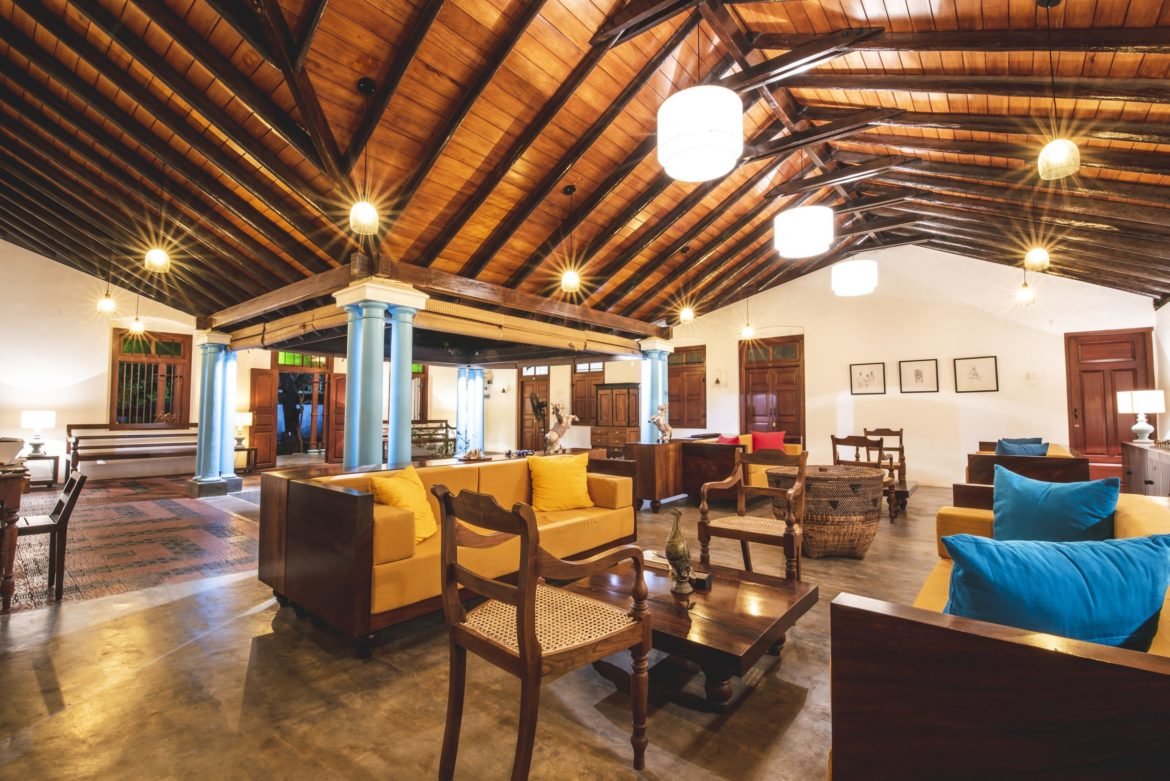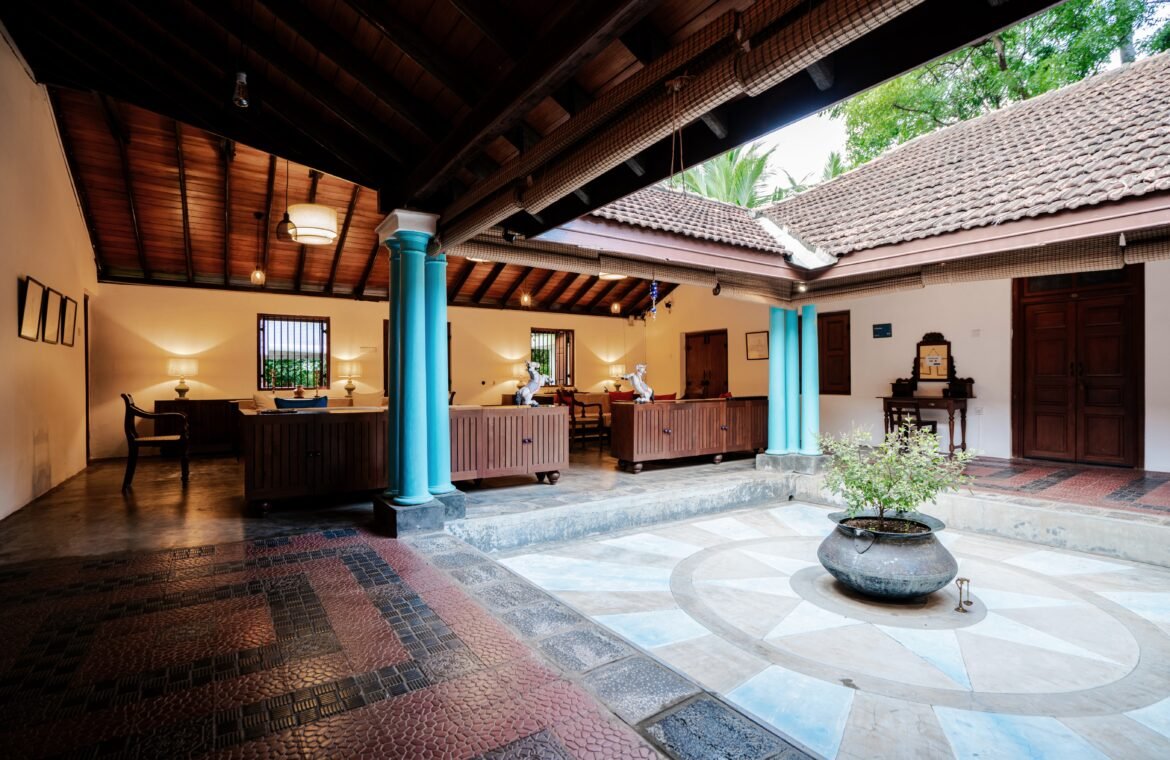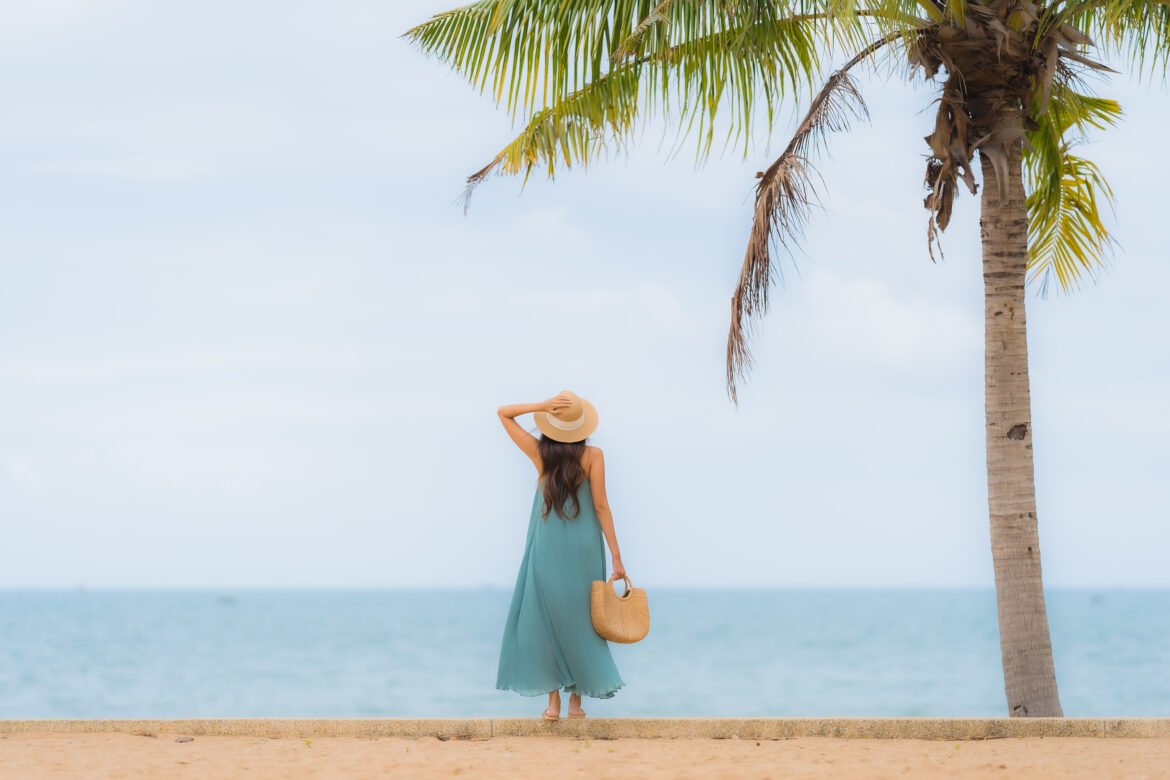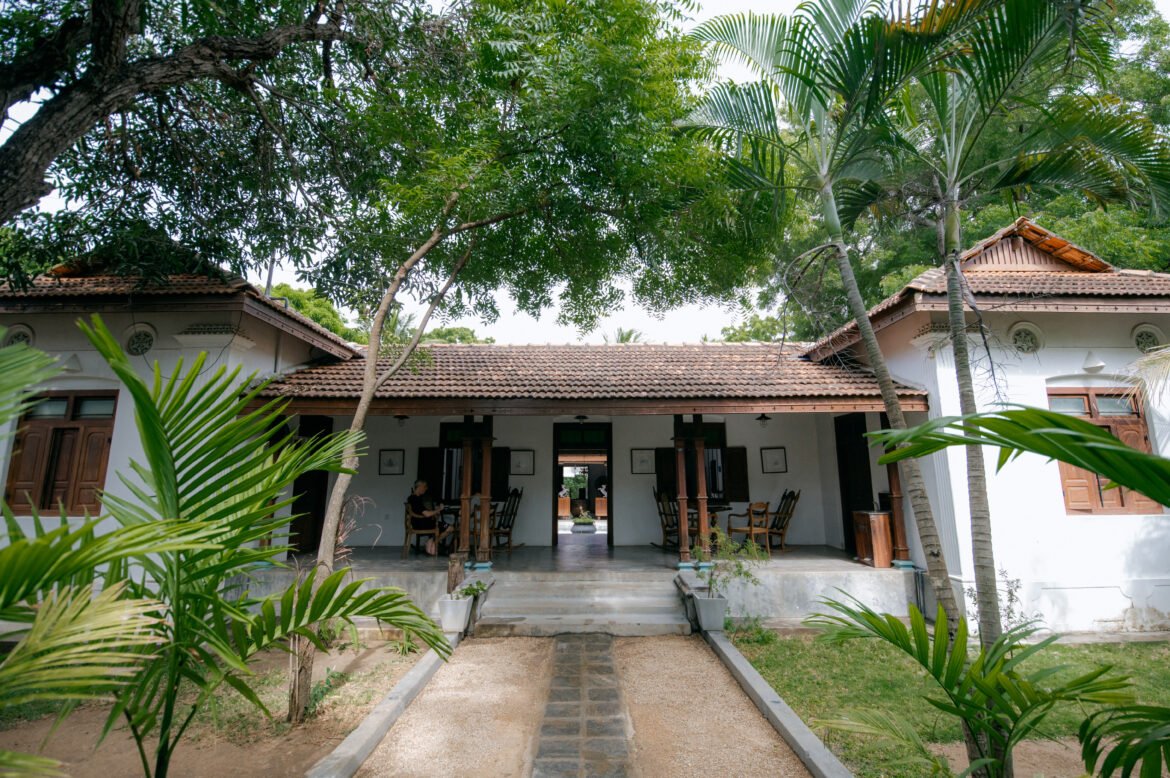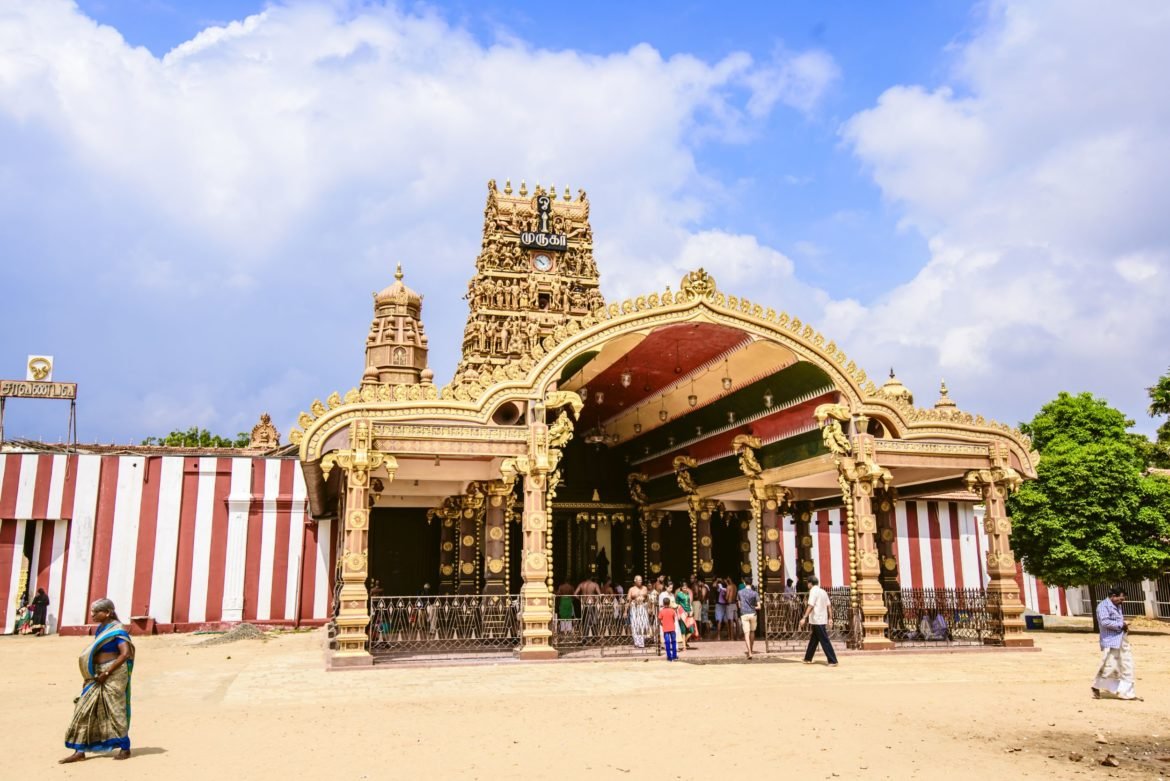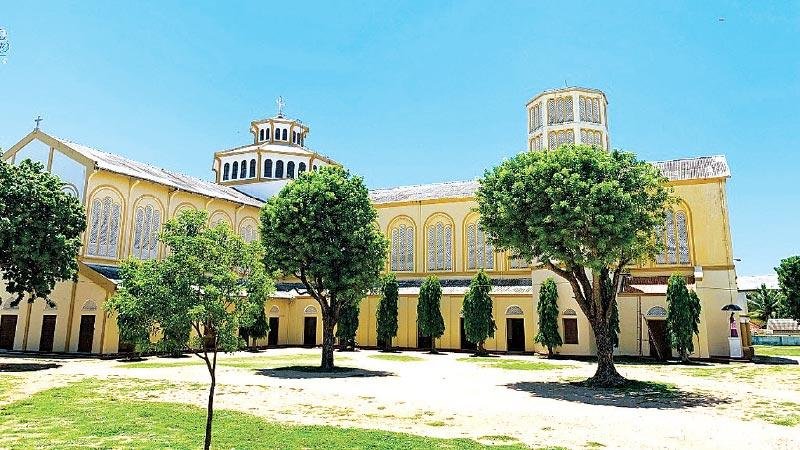In the hot months of August and September, the Nallur Kandaswamy Kovil throbs with exuberant devotion for Lord Murugan, or Kartikeya, the god who has a hundred names. Devotees flock in hundreds of thousands and Jaffna vibrates with life and colour and celebrates the Nallur Festival in Jaffna.
The annual festival of the Nallur Kandaswamy Temple is the longest religious festival in Sri Lanka spanning 27 days throughout the months of Aadi and Avani. In this holy period, statue of Lord Murugan is respectfully transported throughout the entirety of the festival in revered vehicles in the form of animals: peacocks—silver and green; cobra and swan; all considered sacred to the holy spectrum.
(Read more about the month of Aadi here.)
Bringing together thousands of devotees to participate in this colourful spectacle, Nallur Kovil festival parades through the inner premises of the temple by day and its outskirts by dusk, and well into the night.
The different days of the festival celebrate different aspects and legends of Lord Murugan; the presiding deity of the Nallur Kandaswamy Temple.
Saivism in Sri Lanka is a mix of an ancient religion called Nattar Vazhipadu (pronounced, naat-taar va-li-pa-doo) and Agama traditions with Vedic ideologies and practices. Lord Vairavar is an ancient deity belonging to Nattar Vazhipadu. Keeping with ancestral practices, Lord Vairavar is called on to protect the 27 days long festival called Mahotsavam. His permission is needed to begin the festivities.
On this day at dusk, Lord Vairavar rides on a Dog shaped chariot decorated in black and surrounded by flags and symbols.
Kodiyetram or Hoisting of the flag is a ceremony that signifies the beginning of the 27-day Mahotsavam. Thus, it is the 1st day of festivities. The descendants of the Sengunthar Mudaliyar family annually provide the intricately designed white Flag cloth. This family of weavers has maintained this tradition for centuries. The cloth is brought on a chariot from the house of the weavers to the temple, where it is then hoisted. Devotees chant Arohara Arohara and shower the flag with flowers. It is a lovely and moving sight.
Lord Murugan or Katharagama Deviyo (the God of Kataragama) in the form of his weapon, the spear called the Vel is then carried on a Silver peacock chariot. He is accompanied by his 2 wives along with his brother Pillaiyar or Gana Deviyo who rides on a silver rat chariot. Auspicious Red will feature in all decorations, including in the attire of the priests and officials.
And for the following 10 days, a series of religious ceremonies take place and then a series of parades are held.
This is the 10th day of the festival in this series. During this evening occasion, Lord Murugan’s statue in his Muththukumaraswamy form is brought out of the temple to circumvent the Nallur temple along with his wives. The Tamil word manjam, means bed. So the manjam chariot travels slowly. Devotees, men on the left and women to the right, walk along with the majestic chariot. The Chariot depicts scenes of the puranam stories and is brightly lit. The chariot is heavy and large. Thus needs to be pulled by worshipers instead of being carried on shoulders. The priest and officials will be attired in yellow.
This is the 17th day of the festival and happens at late in the evening. Arunagirinathar was a Tamil Saiva poet who composed a set of poems called Thiruppugazh or ‘Holy Praise’ on Lord Murugan. An enactment of Arunagirinathar’s life story in which he transforms himself into a parrot is performed. Parrot green will be worn by the officials and priests.
On this evening festival of the 18th day, Lord Murugan will ride on a large chariot. This chariot is divided into 3 compartments. The middle compartment is for Lord Murugan and the compartments on either side of him are for his 2 wives. Lord Murugan’s wives, Valli, on the left, and Theivanai, on the right, will accompany Lord Murugan as he circumvents the Temple. The colour blue will take prominence in the decorations and clothing.
This is the 19th day morning festival. This festival is for the Sun god. This is the only temple in Sri Lanka that has a festival dedicated to the Sun god. During this festival, the Sun god rides on a chariot formed with seven horses. His 2 wives Chaya, Goddess of Shadow and Maya accompany him as he circumvents the Temple.
On the morning of the 20th day, a festival for Santhanagobalar is held. Lord Vishnu’s avatar or incarnation, in his infant state, is called Santhanagobalar. The playful statue of baby Krishna sucking his toes is mounted on a chariot of a five-headed cobra. Sky blue will be featured in the decoration and clothing.
This festival is held on the evening of the 20th day of festivities. A truly spectacular chariot is used on this day. Mount Kailasa is part of the Himalayan mountain range. This mountain is considered to be the abode of Lord Murugan’s father Lord Shiva and his family. The ancient Sri Lankan ruler, King Ravanan, is believed to be a devotee of Lord Shiva and had attempted to lift Mount Kailasa and fly it to Sri Lanka. The chariot called Kailasa vahanam/vimanam depicts a scene of this story from the great saga, Ramayanam. Lord Murugan in his symbolic Vel form is taken on this chariot along with his 2 wives.
This is the morning festival on the 21st day. During this festival, Goddess Durga also called Maha Kali is honoured. Goddess Durga is taken around the Temple on a chariot of a roaring lion or the mythical creature Yaali. The Yaali is a combination of elephant and lion.
This festival happens on the evening of the 21st day of festivities. On this day Lord Murugan is on a golden chariot pulled by golden horses. Devotees from all parts of the Island arrive to attend this festival. All decorations are generally pink.
This occurs on the 22nd day morning. This festival is also referred to as Mampazha Thiruvizha (pronounced: Mam-pa-la thi-ru-vi-laa). It is an enactment of a puranam story, whereby the importance of parents to children is illustrated. Lord Murugan is accompanied by his elder brother Lord Pillaiyar, who is victorious in a race to win a mango, and circumvent the Temple. An angered and defeated Lord Murugan retreats to the Palani mountain top dressed in a loin cloth and with a mace or Thandayutham as his weapon.
This spectacular festival occurs on the 22nd day evening. This is also called Vettai Thiruvizha. Vetti means Hunt. So this festival is a show of Lord Murugan going for a hunt. A parade of dancers, musicians and soldiers can be seen on this day. The priests too carry weapons instead of the usual pooja items. The grand announcement prior to Lord Murugan leaving the Temple structure to hunt is a fantastic moment to experience. Lord Murugan suitably rides on a horse chariot.
On the 23rd day evening, Lord Murugan circumvents the
Temple on a chariot called Sapparam.
This mighty and tall chariot requires a large number of devotees to
pull. Any visitor to the temple of this day will be dazzled by the decorations
and magnificence of the festival.
This is the day of the Grand chariot festival. It occurs on the 24th day morning. A large crowd gathers from around the world to participate in the festival. As much as people rush to see Lord Murugan on his grand chariot called a ther, they believe that Lord Murugan will ‘see’ them. As such, all evil and hardships will be eliminated from their lives. The statue of Lord Murugan with 6 heads and 12 arms, dressed in the finest jewellery and cloth will circumvent the temple. On this day a variety of kavadi, devotional body piercings can be seen. Also, the extent of the devotion and love that the people feel for Lord Murugan can be seen through the strenuous practices women and men partake in on this day.
Lord Murugan returns back to his abode dressed in green dancing on the shoulders of the devotees. This is said to calm down the God who has battled the evils.
This is on the morning of the 25th day. This is the holy bath festival. A ritual tank found within the Temple complex is used for this event. On this day Lord Murugan is given a ritualistic bath in this tank. It is only appropriate after Lord Murugan’s previous day procession destroying evil and casting his eyes on all directions of the Jaffna Peninsula. Young and the old eagerly wait to be drenched by the waters used to bathe Lord Murugan.
On this 25h day evening festival, the flag that was hoisted 25 days ago is lowered. All decorations will be in white. Oftentimes, the devotees also chose to dress in white. The flag is lowered to the applause of the devotees. The flag is then handed over to the family of weavers, the Sengunthar Mudaliyar family, by the Head priest of the Temple.
On this 26th day evening, Lord Murugan’s marriage to Valli is conducted. It is an enactment of the marriage between Valli, the second wife of Lord Murugan and Lord Murugan himself. Upon hearing of the marriage, Lord Murugan’s first wife, Theivanai, locks the newlyweds out of the Temple sanctum. An interesting course of events occurs asking for forgiveness and understanding. Dialogue is carried out in song between the two parties. Eventually, the door is opened after much convincing.
On this day, Lord Vairavar is thanked for his protection and permission to have been able to conduct another year of the annual festival series for Lord Murugan.

